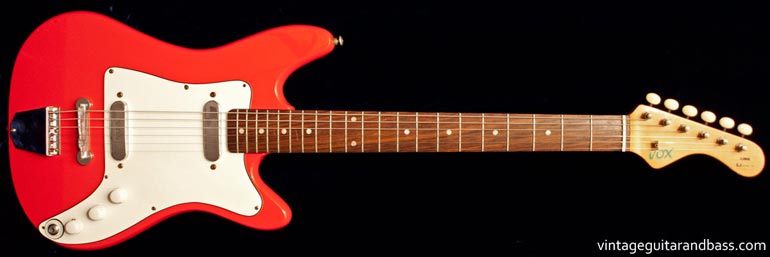
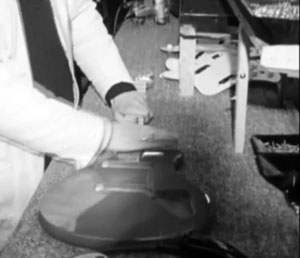
A Vox Clubman guitar being assembled at the UK Vox plant in Dartford, Kent
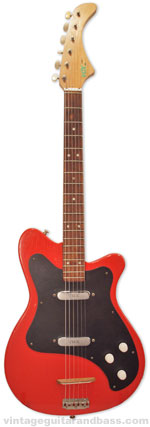
1963 Vox Clubman - have a closer look at this guitar here
The Vox Clubman was one of Vox's early UK-built guitars. Simple, laminate bodied instruments with one or two (the Clubman I and Clubman II) V1 pickups, coaxial input, and a fixed tailpiece and floating bridge. Necks were sycamore, with an un-radiused rosewood/sycamore laminate fretboard (later just stained sycamore), and no adjustable truss rod. These were certainly entry level guitars and were priced accordingly.
The early versions had a distinct body style, and either the same three per side headstock as the earliest examples of the Shadow (late 1962?) or, later, the long thin headstock of the early Ace. After a major redesign in mid-1963, the Clubman took the same Strat-ish body style as the Shadow (minus the Vox standard tremolo), although it shipped side-by-side with the original version at least through to the end of the year. These new Clubman were all fitted with two pickups; the one pickup equivalent was from then on named the Stroller.
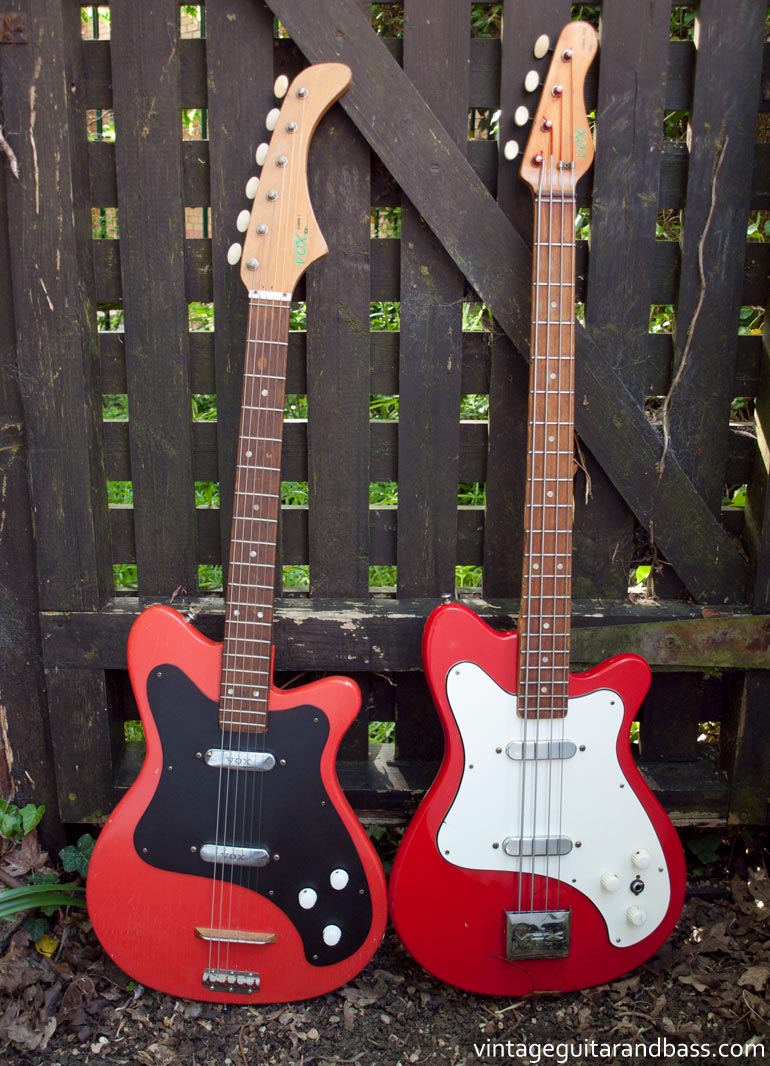
Typically produced with UK Vox's usual red polyester finish, (though occasionally white), and with no adjustable truss rod, the Clubman was cheap and easy to build, giving it a low sale price, and wide availability in the early 1960s. The Shadow model sold in greater numbers though, perhaps due to Hank Marvin (of the band 'The Shadows') popularisation of the tremolo in guitar playing at the time. Towards the end, far superior examples were being shipped: with solid mahogany bodies, standard jack inputs and even some with necks with radiused rosewood fretboards and adjustable truss rods. The Clubman was discontinued in 1967 when Vox stopped producing guitars in the United Kingdom.
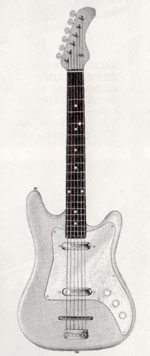
This is how the instrument was described in the 1964 Vox catalogue 'Precision in Sound'.
At this point (Feb 1964, UK pricing), the Clubman was listed at just £22 pounds and 1 Shilling - only the Stroller was cheaper. By contrast, Vox's high end 'Strat copy' the Soundcaster was priced at £89 and 5 Shillings.
As the decade wore on, the competition in, and standard of, entry level guitars increased greatly in the UK and worldwide. Export markets (particularly the USA) required a higher standard of guitar than was typical in early 1960s Britain. JMI offered certain improvements to many of their earlier models, without significantly changing the overall design or functionality. Better body woods and more durable hardware became standard (note the larger chrome tailpiece, and, although you can't see it, the mahogany body of the guitar below).
As the Vox name became associated with their original designs, such as the Phantom and teardrop-shaped Mark series, production of their Fender-influenced guitars diminished. Spare necks, built for the Soundcaster and Consort ended up on certain late Clubman. These necks were far superior to the previous Clubman neck, having a curved rosewood fretboard with adjustable truss rod. Of course, this neck required a radiused bridge. The guitar seen below is still a Clubman but is simply leagues above, in terms of adjustability and playability, other Vox Clubman guitars built up until this point.
